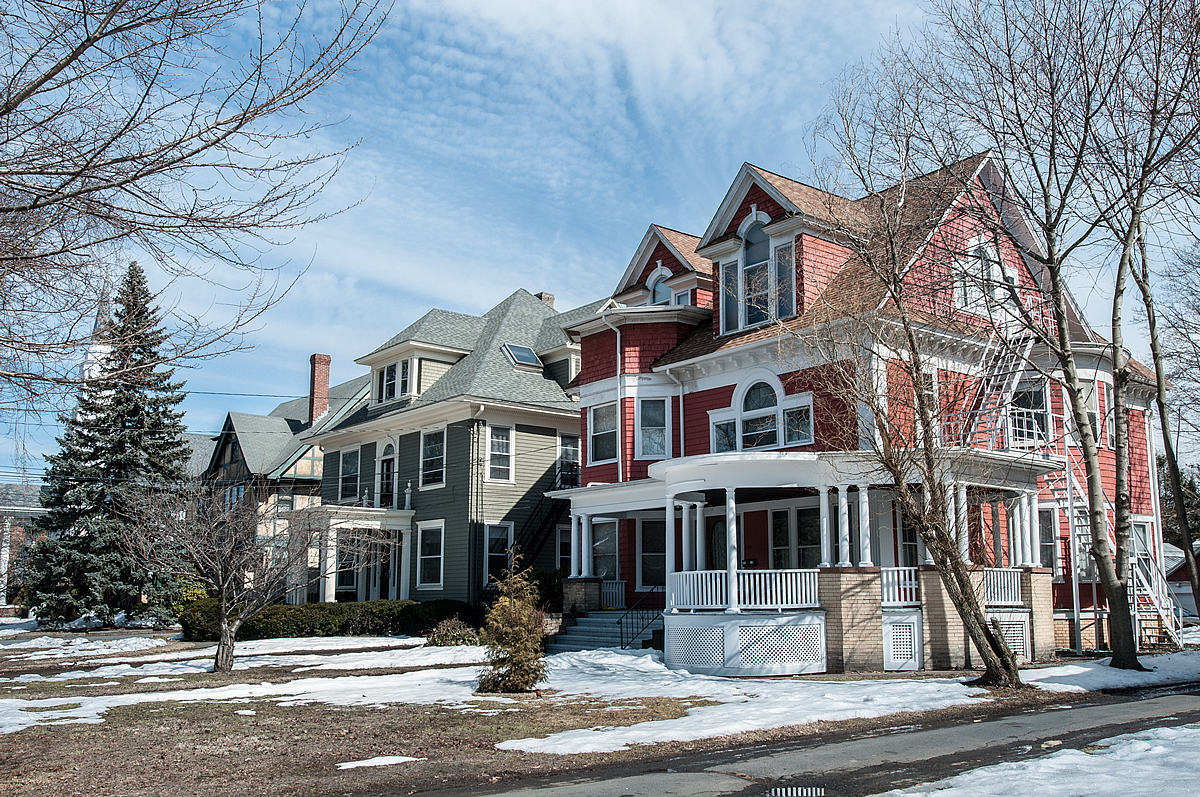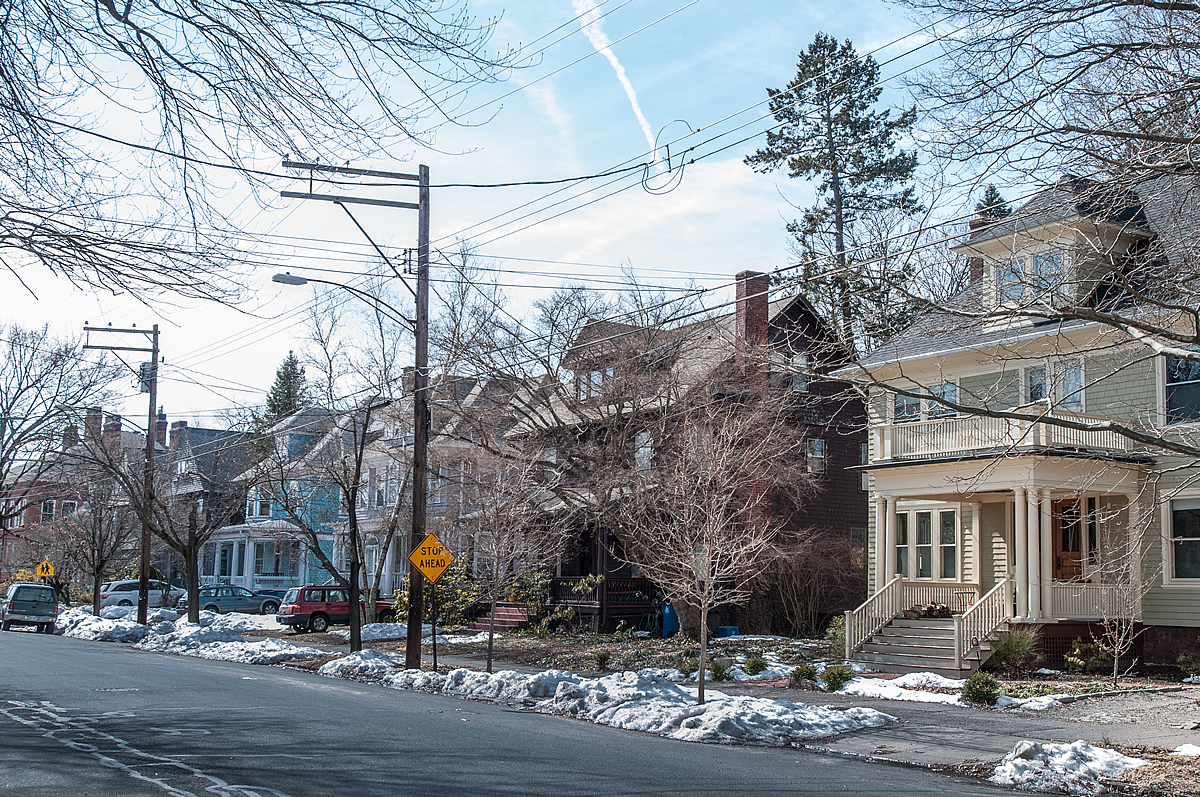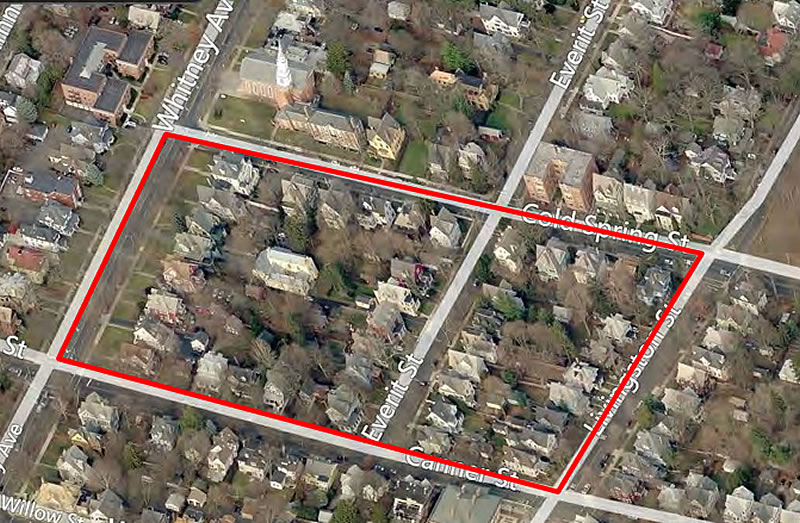

Charles T. Coyle, an Irish-American lawyer and real estate entrepreneur, entered into one of the biggest real estate ventures in New Haven in 1907 when he purchased the entire square from Cold Spring Street to Canner Street between Whitney Avenue and Livingston Street from the Henry Whitney estate. This area was built out and fully occupied within four years. The block includes Coyle's own home at 569 Whitney Avenue, and is contiguous to a block of houses also built by Coyle c. 1904 on Cold Spring Street between Orange and Livingston Streets, facing College Woods, a public park. See also: Charles T. Coyle House.
 Photo: View north from Canner Street showing of part of row of houses on Whitney Avenue. (Tod Bryant)
Photo: View north from Canner Street showing of part of row of houses on Whitney Avenue. (Tod Bryant)
 Photo: View south from Cold Spring Street showing row of houses on Livingston Street. (Tod Bryant)
Photo: View south from Cold Spring Street showing row of houses on Livingston Street. (Tod Bryant)
 Photo: Aerial view showing Coyle Block.
Photo: Aerial view showing Coyle Block.
Brown, Elizabeth Mills. New Haven: A guide to architecture and urban design. New Haven: Yale University. 1976
McAlester , Virginia and Lee, A Field Guide to American Houses, New York: Alfred A. Knopf, 2005.
These buildings are all different and they illustrate some of the many variations of the Colonial Revival style that was popular at the beginning of the twentieth century. The designs include several column styles, dormers, porches, Palladian windows, as well as Georgian and Federal details in an almost infinite number of combinations. Despite the variation in individual design, they present a unified vision of middle-class living in New Haven in that era.
These houses are on closely spaced lots in an urban environment.
Date(s): Built 1907-1911 Style(s): Colonial Revival Historic Use: Residential Present Use: Residential Builder: Charles T. Coyle
Accessibility:
Exterior visible from public road.
The Irish experience has had a profound impact on Connecticut's past, and its narrative spans all periods of the state's history and touches every one of its eight counties and 169 towns.
